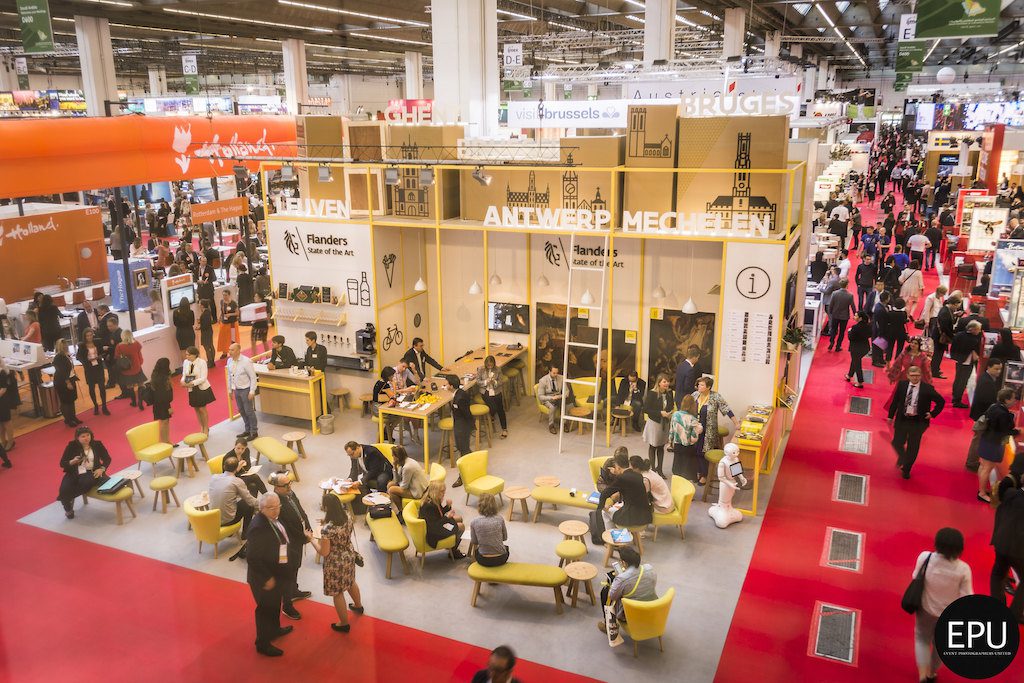Skift Take
Cameras don't always have to make people uncomfortable, especially if they're not being used for facial recognition. Deployed as a way to monitor the flow of attendees, they are a big improvement on common tracking methods, such as wristbands embedded with Wi-Fi devices.
As the race to construct an all-in-one event platform continues, a growing number of conference management companies are turning to on-the-ground tech.
Often this means installing cameras around a venue, something which has long made people nervous, but which is rapidly becoming extremely common, especially at larger events. While facial recognition may still seem invasive to many people, simply using cameras to track where attendees are throughout the course of the day is less intrusive, and can take much of the guesswork out of event management.
One example of this trend is 2Heads, an experiential marketing company which recently updated its events platform to include real-time visual tracking devices. Called Eventhive, the updated platform is designed to give meeting planners information about how different areas of a venue are being used. The service provides planners with live feedback, better enabling them to calculate their return on investment, and hopefully improve future meetings.
Despite the sometimes Orwellian overtones of tracking cameras, the technology has a lot of points in its favor. It tends to be more reliable than other kinds of tracking methods, such as Wi-Fi or radio frequency. Cameras give a literal bird’s eye view of a venue, making it easy to map the flow of people.
“You’ve got a lot of people who do Wi-Fi tracking, but Wi-Fi tracking is only about 67 percent accurate,” said Nick Rosier, content and digital director at 2heads. “You never really can tell from a device ID whether an attendee is at your stand, or a neighboring stand. Even if you do triangulate the location, there’s a degree of error there. Some people have two phones in their pockets, some people have more than two phones. It’s often a best guess number. But by adding in these crowd counting cameras, there’s about 96 percent accuracy. That’s much, much higher than what was possible before.”
Even this more conservative use of cameras has to contend with increasingly restrictive privacy regulations, however, as more countries react to the growing dominance of big tech companies like Google and Facebook. The European Union’s General Data Protection Regulation, which went into effect May 2018, is perhaps the most challenging one so far, at least for companies like 2heads.
According to Rosier, the key has been to be very explicit about what its cameras can and cannot do. Since tracking the presence of attendees in real time does not require the cameras to actually record and store the information, 2heads newest technology has a little more breathing room.
“In Europe with [the General Data Protection Regulation], it can be a bit of a nightmare,” Rosier said. “But as long as we’re not recording the footage from the cameras, we don’t need to worry so much about it, since we’re a data processor rather than a data storer. The law is slightly looser for data processors.”
A similar sense of urgency has spurred companies all over the events industry to either acquire or develop aids to tracking and measuring meetings. The initiative has been so strong over the past few years, but so far no one is quite sure how to make the technology shift happen.
“We can basically calculate how many people are going back and forth in a space or in a corridor or into meeting rooms, throughout the day, which for events is a big deal, because actually getting solid numbers around how many people are showing up, what they’re doing, where they’re going, is difficult,” Rosier said. “It’s done in various ways but it’s not always very centralized. With this we’re gonna actually make event managers’ lives easier and start to build a better picture of what’s happening, not just in one event, but across a whole portfolio of events globally.”
Have a confidential tip for Skift? Get in touch
Tags: event tech, facial recognition
Photo credit: The trade show floor at IMEX America 2017, held in Las Vegas, Nevada. Toerisme Vlaanderen / Flickr
